The Uffizi Gallery is home The Birth of Venus, Primavera, Santa Trinita Maestà and so many other great painting. It’s another must-see art museum if you visit Florence!
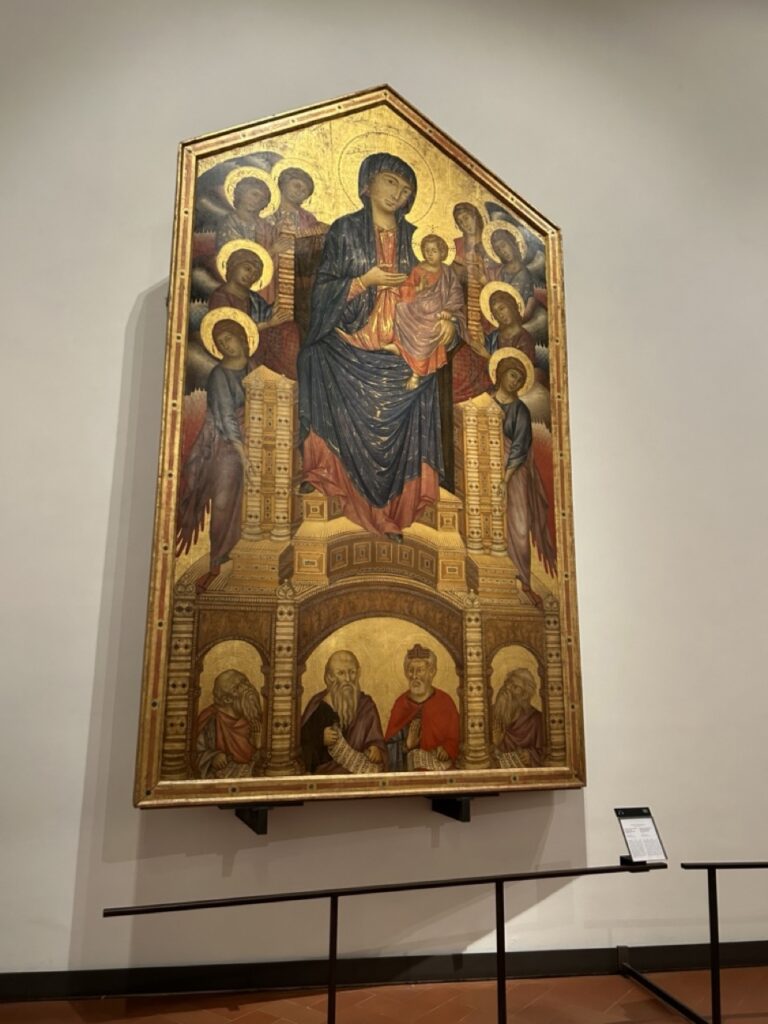
The Santa Trinita Maestà (Virgin and Child Enthroned, and Prophets) was one of the oldest pieces in the museum, dating back to the 1200s. Created by Cimabue and standing at 12 1/2 feet tall, it shows, like so many similar images, the Virgin Mary holding Jesus. The image of Mary is purposefully not realistic to avoid anybody from worshiping the image. (Apparently that was a big problem, because there were countless of these types of painting through all the museums.)
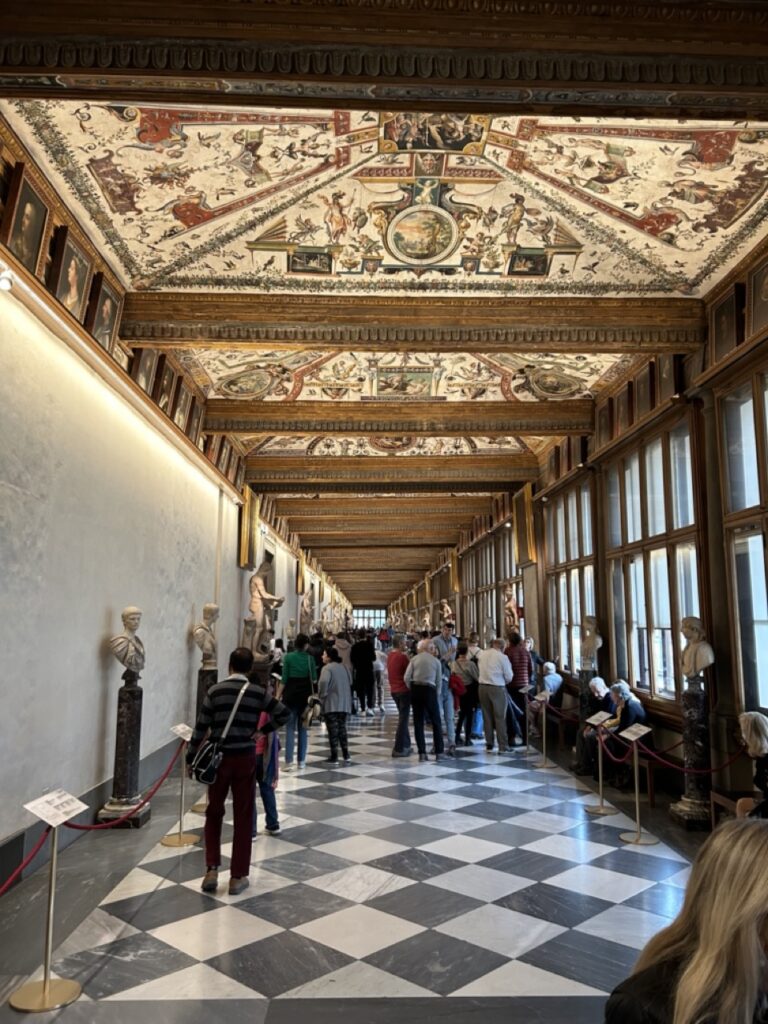
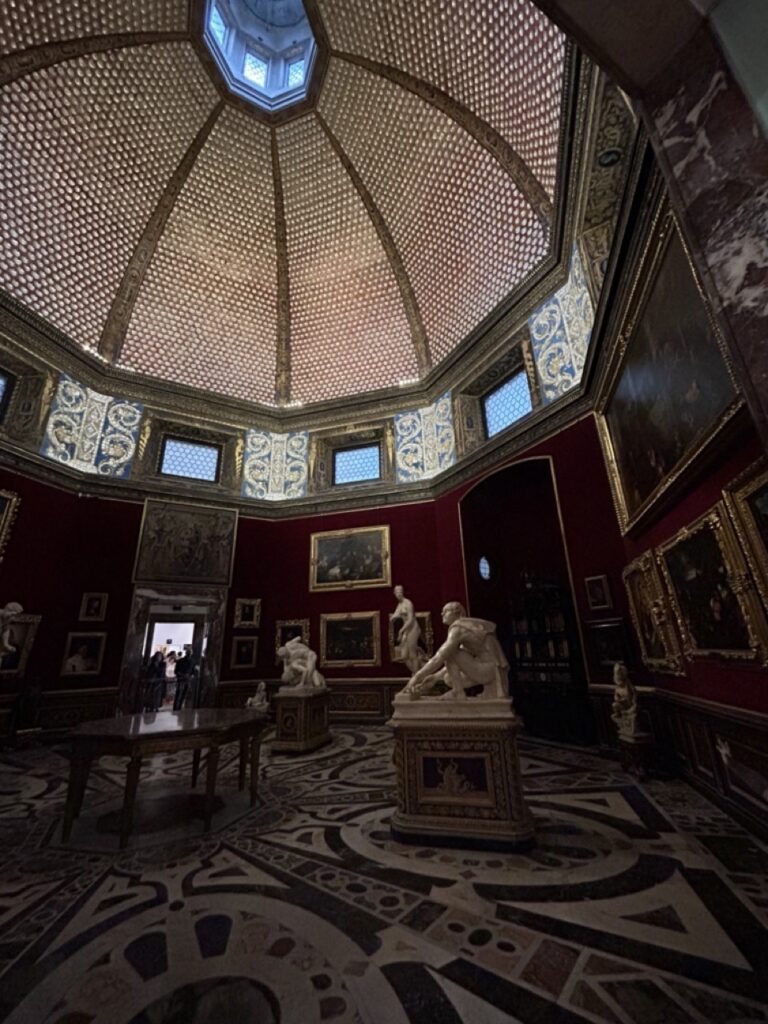
Just walking around the Uffizi, you were surrounded by art and sculpture. The hallways were filled with busts and paintings of nobles, plus the ceiling were full of intricate paintings. The Tribune (above right) was done by Bernardo Buontalenti. The room was built to “to keep jewels and embellishments of the Grand Duke”, aka Francesco I de’ Medici. This included sculpture, artwork, silks and precious stones. The dome represents a vault to heaven because of its 8 sides. Everything is very symbolic.
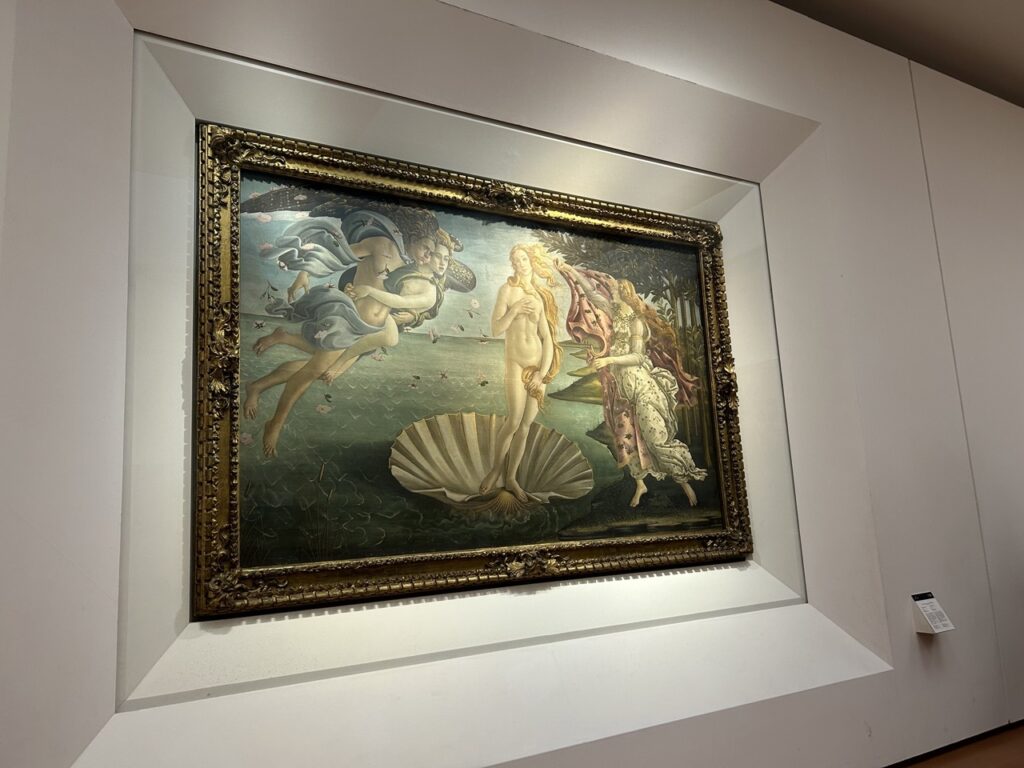
The Birth of Venus by Sandro Botticelli was likely commissioned by the Medici family. The painting shows Venus arriving on land, being blown from the sea by Zephyr (the Greek god of wind) and, perhaps, Aura (the Greek god of breeze). The painting is highly controversial because of the nudity and reference to Greek mythology- very against their Christian values.

Spring or Primavera, also by Sandro Botticelli and commissioned by the Medici family, is a major artwork on display at the Uffizi Gallery. It’s said to be the most written about and popular paintings in Western art. The painting depicts a story, but there is much debate on what the story is. There are 9 mythical figures, including Venus, cupid and 3 Graces. Your guess is as good as mine. You can’t debate it’s beauty though, especially knowing that Botticelli painted at least 138 plant species in the background.

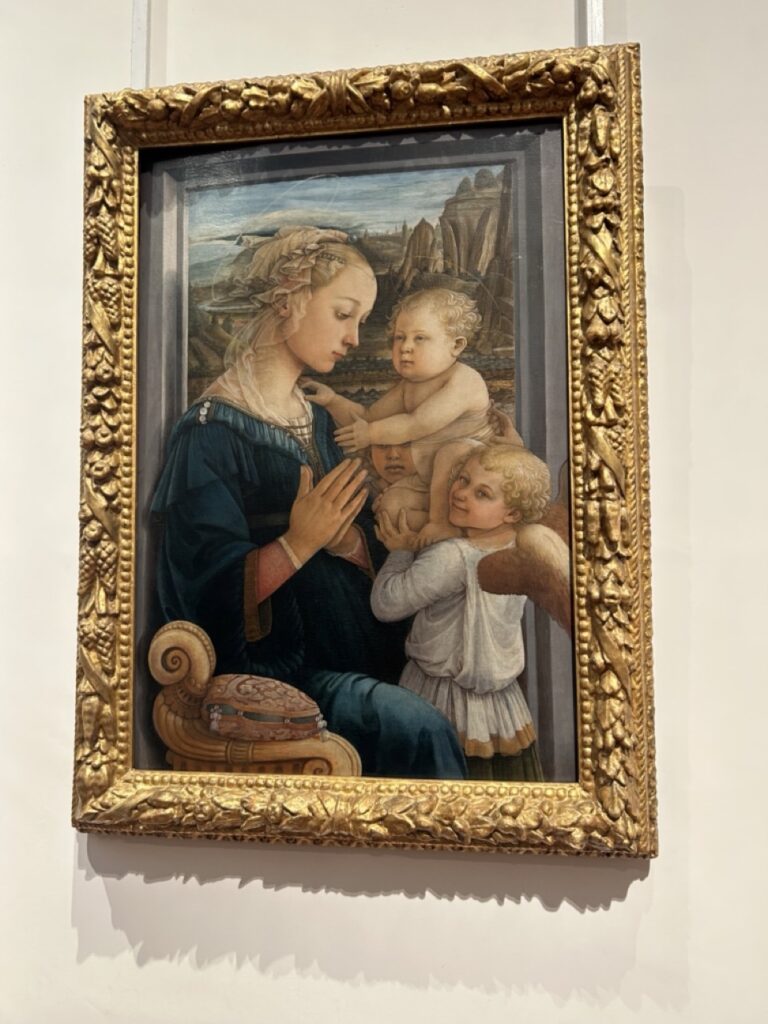
Back to more traditional Christian values are Doni Tondo by Michelangelo and Madonna and Child by Filippo Lippi. Again, depicting scenes of Mary and baby Jesus. One thing similarity in all the Mary paintings is her blue clothing. Blue was the color used for an empress back in the Byzantine era and Mary is certainly revered as that and more.
Not so inline with Christian values is the myth that Mary in Madonna and Child was modeled by the young nun Lucrezia Buti. Rumor has it that she ran away with Lippi and the two married.
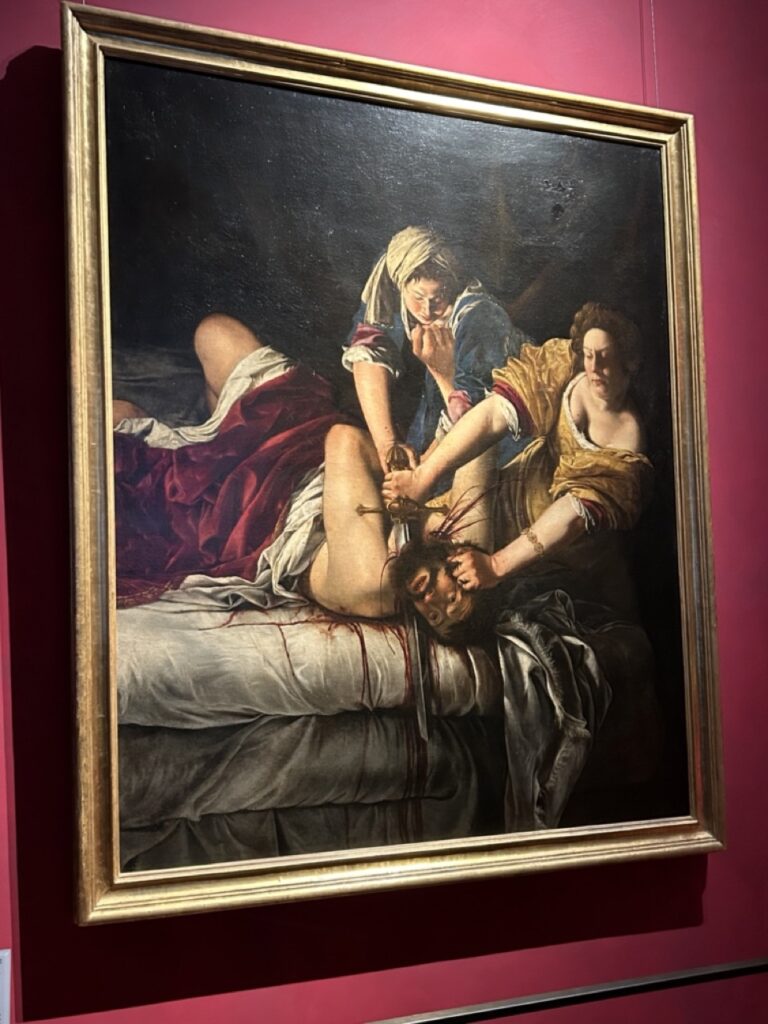
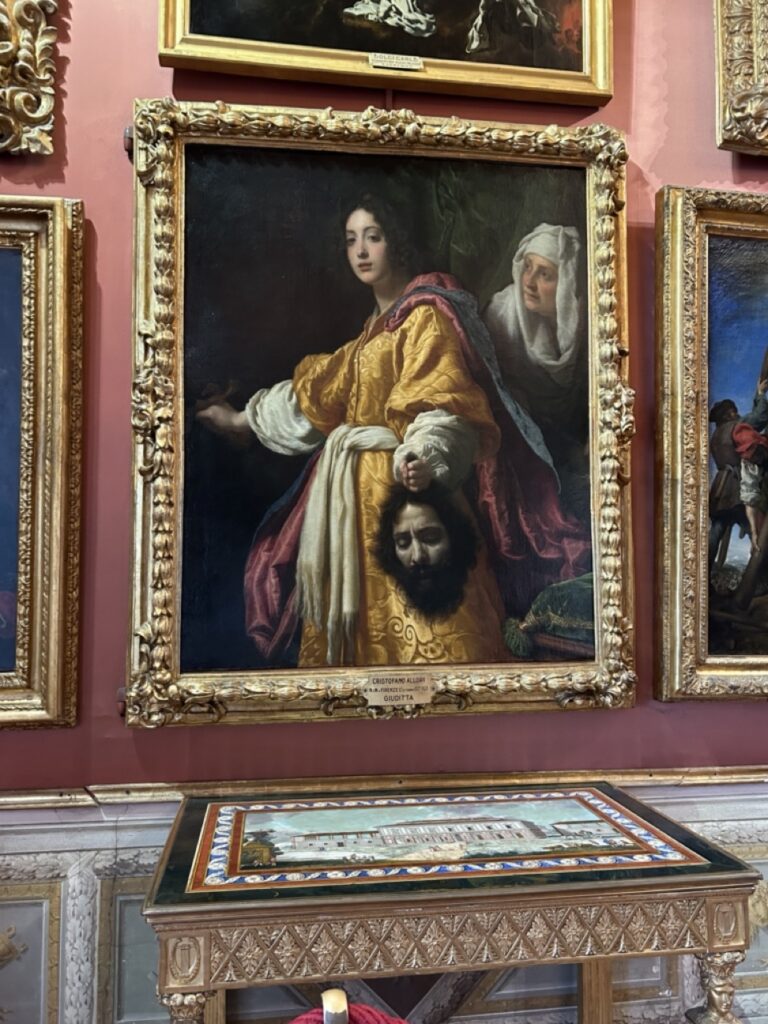
Here we go with vengeful Judith! On the left is Judith Beheading Holofernes by Gentileschi. Same event at the Judith with the Head of Holofernes at the Pitti Palace (on the right), but a much difference interpretation. Judith’s entire demeanor is different, not to mention which part of the beheading is shown. Even the maid is taking a difference role in both paintings. One is a willful helper and the other is a scared servant.
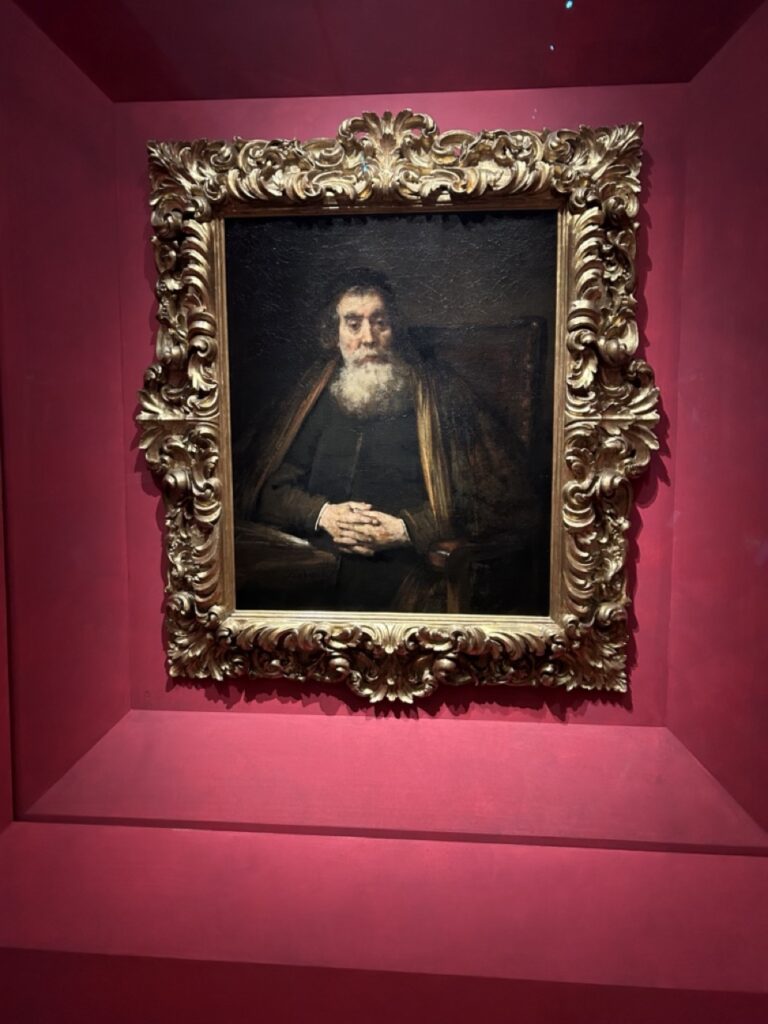
Last, but not least, is The Portrait of an Old Man by Rembrandt. I don’t remember seeing any Rembrandt paintings when we went to the Louvre, so I had to take at least a few minutes looking at this piece. Rembrandt came much later than a lot the other painting mentioned above, but still a master artist in his own right.
More Italy Posts
- Palazzo Medici-Riccardi + San Lorenzo Church + San Marco Monastery
- Day Trip to Siena + San Gimignano + Pisa
- Bargello National Museum + Opera del Duomo Museum
- Accademia Gallery + Wine Tasting at Il Borro
- Santa Maria Novella Church + Palazzo Pitti


One thought on “Uffizi Gallery”
Comments are closed.